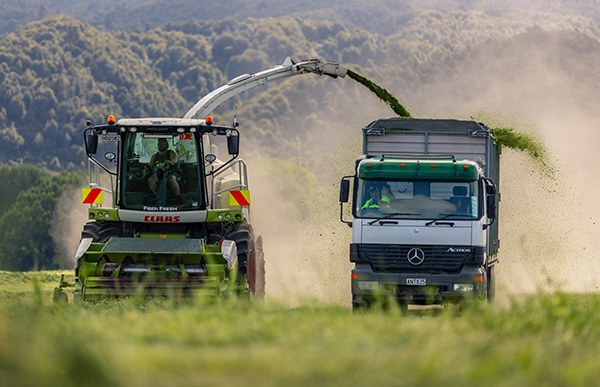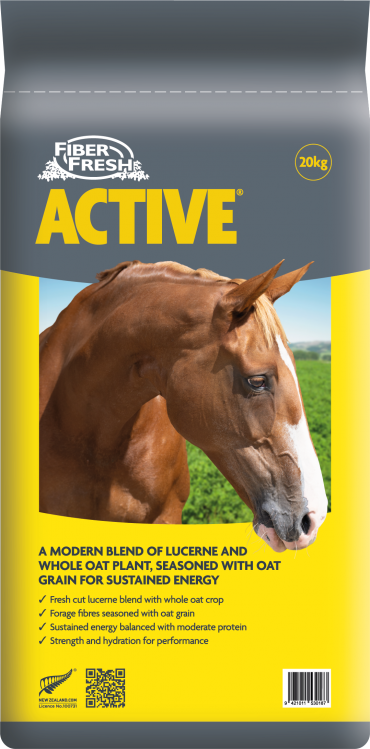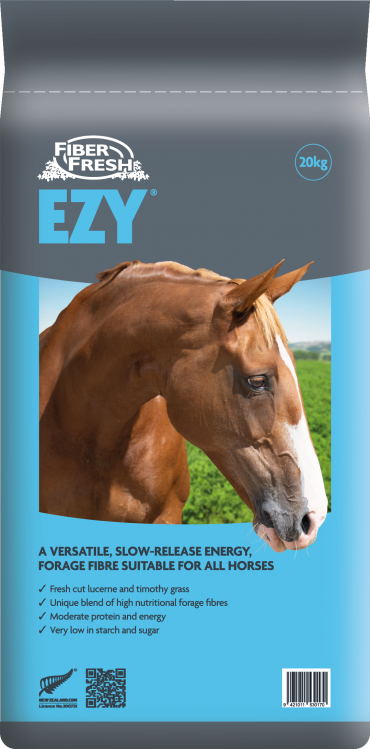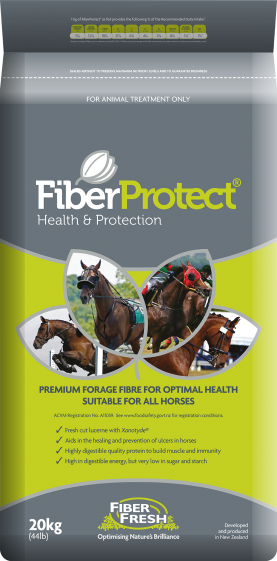
Getting the right amount of high quality forage in the feed bowl is often overlooked. Achieving the correct balance of fibre in the feed bowl will not only improve gut function, but digestive health and it can improve the total digestibility of the diet. Meals containing a high percentage of grains and concentrates often lead to issues such as gastric ulceration and/or colic, so it is important that each and every feed is correctly balanced with the right amount of forage. The National Research Council (NRC) guidelines advise that a horse should never be fed more than 50% of its total diet as grains or concentrates.
Why horses need quality fibre
Horses have evolved as grazing animals that are continually grazing and constantly moving, up to 14-17 hrs a day, which means they eat small amounts, often. They have a small, relatively in-elastic stomach which is approximately 9% of the total digestive tract. For actual size think size of a football/rugby ball.
The equine stomach continuously secretes acid, and the supply of fibre, almost continuously, facilitates chewing which produces saliva (up to 35L/day), which aids in reducing the acidity of the stomach.
The small intestine is approximately 25% of the total gastric intestinal tract and is the site of nutrient absorption of protein, fats, sugars (starch), vitamins and minerals. Horses are hindgut fermenters, this is a very large organ which makes up approximately 65% of the digestive tract and is responsible for extracting energy from large amounts of fibre via microbial fermentation. Thus the supply of fibre in a sufficient amount, and of acceptable quality is important to the gastric and overall health of the horse.
The impact of domestic life on a horse’s digestive health
Generally a horse’s grazing and moving behaviour is at odds to how they are kept as sport and leisure horses – many horses are stabled, offered 1-2 large meals a day, and sometimes without adlib access to forage fibre. This can result in a range of digestive (and behavioural), conditions that are deleterious to the overall health (and performance) of the horse. One of the most common digestive problems in sport and recreational horses is gastric ulcers when forage fibre not sufficient or restricted in their diet.
It is well accepted that forage fibre needs to make up at least half of the horses diet and total forage fibre intake should always be at least 1.5% of the horse’s bodyweight in dry matter (DM), to maintain optimal gastrointestinal health. For a 500 kg horse, this would equate to between 7.5 kg of forage (on a DM basis) per day. If this is not provided, the gastrointestinal health and function of the horse may be compromised and digestive complications such as ulcers, colic and hindgut acidosis may occur.
Fiber Fresh – A proven winner for digestible energy and quality fibre
Scientific trials have shown that increasing the proportion of Fiber Fresh in the feed bowl can increase digestible energy by up to 9% as the Fiber Fresh makes more of a contribution to Digestible Energy than many other chaff or fibre sources, which are lower in digestible energy or calories.
By adding a product from the Fiber Fresh range to your horse’s diet, you will be offering a highly nutritional forage of consistent quality.
Your horse’s natural choice for digestible fibre & energy
Feeding Fiber Fresh at the 2:1 ratio introduces a better balance of safe forage energy and nutrition for your horse. The added benefit of improved digestion and gastrointestinal (gut) health will often mean that less grains or concentrates are required to reach your required energy levels. Always feed 2:1 by weight - not volume.
Feed solutions from Fiber Fresh
The range of Fiber Fresh products available in Australia are Fiber Protect, Fiber Ezy and Fiber Mix.The key benefits are:
- Superior nutrient retention during the fermentation process (drying reduces many nutrients) – proven in published trials
- The Crude Protein (CP), is significantly higher in a fermented product, thus more protein per kg of DM
- Higher digestibility (18% higher than dry forage/chaff) – (Stowers et.al. 2013)
- Diet-limiting or essential Amino Acids; Lysine and Methionine had higher digestibility levels than dried Lucerne chaff (Stowers et.al., 2013)
- Fiber Fresh forage fibre allows for passive hydration in the horses diet (helpful for those equines that don’t drink well - especially performance horses). Horses fed a Fiber fresh forage consumed 8% more water, than a diet containing a dried forage source
- No dust – better for those horses with respiratory conditions
- Ideal for equines requiring low starch/sugar diet (<10% starch/sugars) – Fiber Protect and Fiber Ezy
Robyn Hirst BSc Animal Science M.AgriSci Equine Studies




